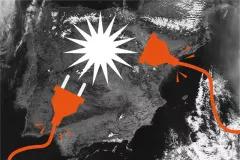
- Which country is making more progress in decarbonising their road transport sector with low-carbon fuels?
- Which country has a higher share of renewable energy? How does this look for countries without a large share of hydropower?
- How much are China and India’s economies emitting in relation to their economic output? Is it more or less than in the USA?
- Who emits more to produce one tonne of steel—China or the EU? And how does the volume of steel production compare between these countries over time?
- Who emits more greenhouse gases to grow food—India or Germany?
- Which countries show more progress in stopping deforestation?
All of these questions, and many others, can now be answered through the Climate Action Tracker’s new interactive decarbonisation data portal, launched today.
"To meet the Paris Agreement’s 1.5˚C warming limit, the world has to decarbonise, so we’ve set this up to track the rates of decarbonisation in various sectors to better understand what is contributing to the overall emissions trend in different countries," said Sebastian Sterl, former project leader, of NewClimate Institute.
“This project is complementary to the Climate Action Tracker’s country assessments, where we measure actual emissions in gigatonnes, against pledges, current policy scenarios and Paris Agreement compatible emissions pathway.”
The CAT has entered data into the portal from 41 indicators of emissions trends over 32 countries, drawing from a wide range of data. It allows a user to directly compare the overall decarbonisation (emissions intensity) trends in 13 sectors—between countries, sectors in different countries, and across sectors within a specific country.
“We set out to build a highly practical, state-of-the-art tool that people would enjoy using, so of course that means it needs to look good as well as be simple and easy to use. Given the huge amount of data you can explore, I think we’ve achieved that,” said Matt Beer, the Climate Analytics data visualiser who designed the portal.
The portal allows comparison across sectors under different scenarios: historical; the Paris Agreement’s emission reduction pledges; the CAT’s “current policy projection” scenario, “best-practice” examples, and the presently available 2˚C pathways (the latter will be updated once the new generation of Paris Agreement-compatible 1.5°C pathways are published later in 2017).
For purposes of comparing country-level decarbonisation, the portal uses per-capita and per-GDP energy and emissions data. To compare decarbonisation at sectoral level, it draws from a wide range of data on activity and intensity indicators.
“Separating out activity from intensity allows us to dig a bit deeper—for example, to determine the cause of the drop in steelmaking emissions in the EU after 2009’s financial crisis. The data can show us it was a decrease in activity that caused the drop in emissions, not an increase in efficiency,” said Yvonne Deng of Ecofys.
The portal will be updated once data become available for 1.5˚C scenarios.
Try the portal out yourself:
Visit the Intro page where you have direct access to country specific decarbonisation factsheets, the how to use video guide - and the portal itself.
And feel free to use our gif.






